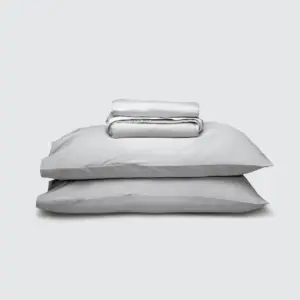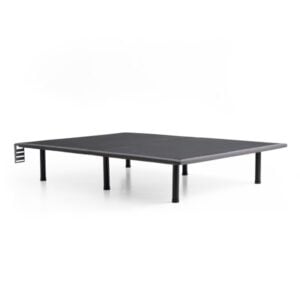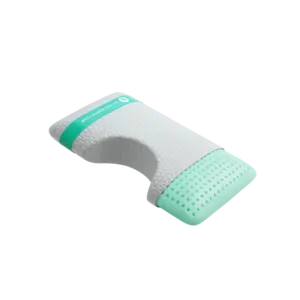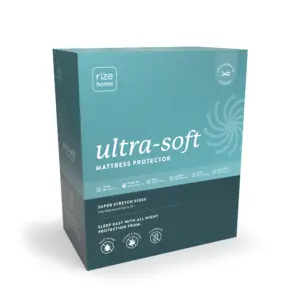We all know that a good night’s sleep is essential for feeling refreshed and ready to tackle the day ahead. But did you know that the temperature of your bedroom can significantly impact your sleep quality? That’s right; the best temperature for sleep is crucial for getting restful and restorative sleep.
Many factors affect sleep quality, and temperature is one of the most critical ones. If it’s too hot or too cold, you may struggle to fall asleep, wake up frequently throughout the night, and feel groggy and tired in the morning. That’s why it’s crucial to understand the impact of temperature on sleep and learn how to create the perfect sleep environment.
In this article, we’ll explore the importance of sleep for overall health and well-being, the factors that affect sleep quality, and how to achieve the best temperature for sleep. So, let’s dive in and get you on your way to better sleep!

Have you ever wondered why you feel warm and cozy under your blankets while sleeping, or why you tend to toss and turn when the temperature is too high or low? It’s because the human body has a natural temperature regulation system that plays a significant role in our sleep quality.
The hypothalamus, a small but mighty gland in the brain, is responsible for regulating our body temperature. It works to maintain our core body temperature, which is essential for various bodily functions, including sleep. The ideal core body temperature for sleep is between 36.5°C and 37.5°C (97.7°F and 99.5°F).
But that’s not all – our circadian rhythm also plays a crucial role in sleep temperature regulation. Our body temperature follows a natural 24-hour cycle, with the lowest temperature occurring in the early morning hours and the highest in the late afternoon or early evening. This means that it’s easier to fall asleep when our body temperature starts to decrease, and it’s more challenging to fall asleep when our body temperature is rising.
Interestingly, our skin temperature also plays a role in our sleep quality. While our core body temperature remains relatively constant, our skin temperature can vary depending on the environment. When we sleep, blood flow to our skin increases, causing our skin temperature to decrease. This decrease in skin temperature helps us fall asleep faster and stay asleep longer.
Understanding the science of sleep temperature is essential for creating a comfortable sleep environment. In the next section, we’ll explore the ideal room temperature for sleep and how to achieve it.
Now that we understand the science behind sleep temperature, let’s talk about the ideal room temperature for sleep. According to the National Sleep Foundation, the recommended temperature range for optimal sleep is between 60°F and 67°F (15.6°C and 19.4°C). However, individual preferences can vary based on factors like age, gender, and health conditions.
Keeping your bedroom at a comfortable temperature is crucial for getting a good night’s sleep. If the room is too hot or too cold, it can disrupt your sleep by causing you to wake up frequently, tossing and turning, or experiencing nightmares. High temperatures can also increase the risk of dehydration and heat exhaustion, while low temperatures can cause discomfort and even hypothermia.
Factors such as age and gender can also affect temperature preferences. Women tend to feel cold more often than men, while older adults may prefer warmer temperatures due to changes in their circulatory system. Additionally, health conditions such as thyroid problems and sleep apnea can affect how your body regulates temperature, making it essential to consult with a doctor if you’re experiencing sleep disturbances.
To achieve the best temperature for sleep, try adjusting your thermostat or using a fan to cool down the room. You can also invest in breathable bedding and pajamas that help regulate your body temperature. Creating a comfortable sleep environment can make all the difference in your sleep quality and overall well-being.

Creating a sleep-friendly environment is essential for achieving optimal sleep quality. In addition to adjusting your room temperature, there are several other strategies you can use to create a comfortable sleep environment.
One of the easiest ways to adjust your room temperature for better sleep is by using a programmable thermostat. Set your thermostat to the recommended temperature range for optimal sleep (between 60°F and 67°F) and adjust it as needed based on your individual preferences. Using a fan or air conditioning can also help regulate the temperature and improve air circulation.
In addition to temperature, bedding can also play a significant role in sleep quality. Choose breathable, natural fibers like cotton or bamboo, and opt for a lightweight comforter or blanket that can be easily adjusted based on your temperature preferences. Additionally, investing in blackout curtains or using an eye mask can help create a dark environment, which is essential for signaling the body to produce melatonin, the hormone that regulates sleep.
Another crucial factor in creating a sleep-friendly environment is reducing noise and distractions. Use earplugs or a white noise machine to block out external sounds and create a more peaceful environment. You can also adjust lighting by using dimmer switches or choosing low-wattage bulbs to create a more relaxing atmosphere.
By implementing these tips and strategies, you can create a sleep-friendly environment that promotes restful and restorative sleep. Remember, creating a comfortable sleep environment is crucial for achieving the best temperature for sleep and improving overall sleep quality.

While room temperature is a significant factor that affects sleep quality, there are several other external factors that can impact sleep temperature. Let’s explore some of them:
Weather and seasonal changes can affect sleep temperature, especially for those who live in regions with extreme temperatures. In the winter, the air can be too dry, causing discomfort and making it harder to breathe, while in the summer, high humidity can make it difficult to cool down. Adjusting your sleep environment based on the weather can help you achieve the best temperature for sleep.
Sleep disorders like insomnia and sleep apnea can also impact sleep temperature. Insomnia can cause the body to become overheated due to increased metabolic activity, while sleep apnea can disrupt the body’s natural temperature regulation system. Treating these conditions can help improve sleep quality and regulate sleep temperature.
Finally, medications and substances like caffeine and alcohol can also affect sleep temperature. Caffeine is a stimulant that can raise body temperature and disrupt sleep, while alcohol can lower body temperature and cause discomfort. It’s best to avoid these substances before bed to achieve the best temperature for sleep.
In summary, there are several external factors that can impact sleep temperature, including weather, seasonal changes, sleep disorders, and substances. By understanding these factors and implementing strategies to regulate sleep temperature, you can improve your sleep quality and overall well-being.

In conclusion, temperature plays a crucial role in sleep quality, and achieving the best temperature for sleep is essential for getting restful and restorative sleep. We’ve explored the science behind sleep temperature, the ideal room temperature for sleep, and tips for creating a sleep-friendly environment.
It’s clear that temperature regulation is vital for achieving optimal sleep quality. By keeping your bedroom at a comfortable temperature, choosing breathable bedding, and reducing noise and distractions, you can create a sleep environment that promotes restful and restorative sleep.
In today’s fast-paced world, it’s easy to neglect the importance of sleep. However, prioritizing temperature control is a crucial step in improving your sleep quality and overall well-being. So, let’s take action and make sleep a priority by implementing the strategies discussed in this article.
Remember, the best temperature for sleep is not a one-size-fits-all solution, and individual preferences can vary. Experiment with different strategies to find what works best for you, and consult with a healthcare professional if you’re experiencing sleep disturbances.
By prioritizing temperature control in the pursuit of better sleep, you can improve your physical and mental health and enjoy the many benefits of a good night’s rest.
Further Reading
“Sleeping at the ‘wrong’ temperature: Effects on thermoregulation, sleep stages, and the sleep EEG.” This study published in the Journal of Sleep Research examined the effects of sleeping at different temperatures on thermoregulation, sleep stages, and the sleep EEG. The study found that sleeping at a cooler temperature resulted in increased slow-wave sleep and a more stable body temperature during the night.
Optimal bedroom conditions for sleep: A systematic review.” This article published in the Journal of Sleep Research reviewed the scientific literature on the optimal bedroom conditions for sleep. The review found that a temperature range of 60-67°F (15.6-19.4°C) is associated with optimal sleep quality.
“The effect of ambient temperature on sleep quality: A systematic review.” This article published in Sleep Medicine Reviews reviewed the scientific literature on the effect of ambient temperature on sleep quality. The review found that both high and low temperatures can have a negative impact on sleep quality and that a temperature range of 60-68°F (15.6-20°C) is associated with the best sleep quality.













